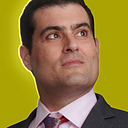Life lessons from Jim Simons: The ‘World’s Smartest Billionaire’
Subscribe to my mailing list to receive blog posts the day they are published: http://briankeating.com/mailing_list.php
Jim Simons has known me since I was born and has been a father figure and mentor throughout my life. Having him on a special Father’s Day episode of the INTO THE IMPOSSIBLE podcast was a true joy.
This is the very first time Jim has appeared on any podcast; it’s a real honor. We spoke about all three phases of his professional life — math, investing, and philanthropy. We also strayed into the personal — discussing mentorship, parenthood, and legacies.
Hearing him talk about the love he and his father had for each other was moving. The mantra that Jim’s father instilled in him, “Salesmanship is very important,” is an interesting one, especially when it comes to science.
As Jim says, “It’s good to be able to sell something. Even in science — you do some work and you want other people to appreciate it and use it. So you’re kind of selling.”
While science communication is not often described in this way, it is essentially salesmanship. It is an aspect of what we’re doing here at The Arthur C. Clarke Center for Human Imagination, using this podcast as a tool to “sell” remarkable science and scientists.
Another great story that came from Jim’s memories of his father is Jim’s first memory of math. At the age of three or four, he stumbled into Zeno’s dichotomy paradox when his father mentioned needing to stop and put gas in the family car.
Jim recounts saying, “Well why don’t you just use half the amount that’s in the tank, and then use half of that, and then use half of that, etc. And you’ll never run out!”
Somehow it’s not hard to imagine Jim as a toddler contemplating mathematical concepts that have stumped generations of thinkers. He has an exceptional mind. We also discuss the beauty he finds in math and, along with that, the art that math creates.
On the Stony Brook University campus, in the Simons Center for Geometry and Physics, is a permanent art installation called Iconic Wall. It includes fundamental equations carved into stone and is iconic in and of itself.
Jim has over fifty years of experience, providing unparalleled insights about the differences and similarities between academic, corporate, and philanthropic leadership. The main takeaways: hire the right people and be decisive.
Jim’s list of mentors is a who’s who of mathematics. The fact that Shiing-Shen Chern was on sabbatical when Jim arrived at UC Berkeley ready to work with him is undeniable serendipity. Though we can’t know for sure, I suspect their partnership, resulting in the Chern-Simons theory, may not have happened had Simons been Chern’s grad student.
Jim has been a mentor in my own life, one I have been privileged to know my entire life. And thankfully, even though he knew me before I knew myself, he has remained an important figure in my life. It’s always humbling to talk to people who knew me before I became an academic and podcast host extraordinaire.
For this episode, I got to adapt the usual question about monolith inscriptions to place the billion-year time capsule on Asteroid 6618, named Jimsimons. What I refer to as an ethical will is an ancient Jewish document, known as a “Zava’ah” in Hebrew. The Simons Foundation, co-founded with his wife Marilyn, is an obvious example of how Jim’s legacy will live forever.
As I’ve discussed before, writing a book seems the best way to pass lessons down through history. I’m pleased to hear Jim say that writing a book is in his plans for his upcoming retirement. And that his daughter urges him to, as have I.
In our discussion of legacies, Jim was quick to weigh his many accomplishments against a lifestyle of setting a good example. What a simple yet powerful notion.
“The most important science is political science,” he says. “It teaches us how to live together. If we can’t learn to live together, we’re going to die together. We have to learn to live together.”
I want to wish Jim a Happy Father’s Day and thank him for his role in my life, personally and professionally. And Happy Father’s Day to our listeners and viewers as well. Thanks for spending the holiday with INTO THE IMPOSSIBLE!
Books we discussed in this episode:
The Captain by Jan De Hartog. Jim’s favorite book on leadership.
Team of Rivals: The Political Genius of Abraham Lincoln by Doris Kearns Goodwin
The Man Who Solved the Market: How Jim Simons Launched the Quant Revolution by Greg Zuckerman
Watch the INTO THE IMPOSSIBLE interview with author Greg Zuckerman.
Learn more about the Simons Observatory and follow its progress on Twitter @SimonsObs.
Learn more about the Simons Foundation and follow them on Twitter @SimonsFdn
Find Brian Keating on Twitter @DrBrianKeating and YouTube
Please subscribe, rate, and review the INTO THE IMPOSSIBLE Podcast on iTunes: https://itunes.apple.com/us/podcast/into-the-impossible/id1169885840?mt=2
Jim Simons earned a Ph.D. in mathematics from UC Berkeley at the age of 23. He worked as a mathematician for the NSA and as a professor and department chair at Stony Brook University. Simons earned billions after founding the hedge fund firm Renaissance Technologies. He co-founded the Simons Foundation with his wife Marilyn in 1994 to advance scientific research. The foundation provided funding for the Simons Observatory, a telescope array being built in Chile. Simons also founded Math For America in 2004 to facilitate better math education.
